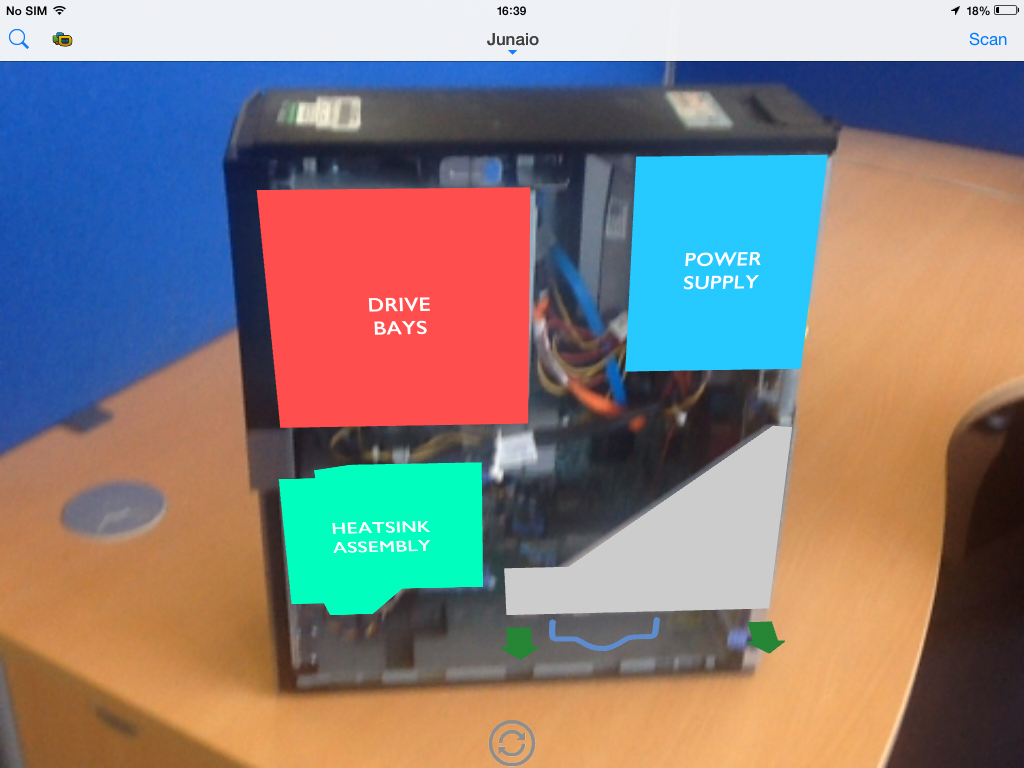I have been fortunate enough over the last few weeks to get hold of a pair of Google Glass and do some initial research of potential use cases in education. As stated in previous posts, at present there are some serious limitations on their use in an AR capacity, probably the most worrying is that they get very hot after only a couple of minutes! However, I wanted to see if I could demonstrate a simple application where wearables could add to the learner experience rather than replicate what is already available.
The idea of the connected world is very popular at the moment, the nirvana for many is that the sensors we use in our devices/wearables can provide a highly engaging, informative and personalised experience, especially when practical tasks are concerned. Augmented assets could potentially complement the physical environments we work in to assist in so many technical processes. With this in mind, and having the Mimas Sys Admin conveniently sat at a desk opposite, I acquired an old PC tower with a view to building an AR experience guiding a user on how to remove the Riser-Card Cage. It was relatively quick to build the assets for the channel, most of the time was spent putting together the 3D CAD tracking model and the animation in Blender.
The video on Google Glass is relatively low spec (720p) so it was necessary to sacrifice the accuracy of the trigger model to display the content. As a result, sometimes the alignment of the 3d assets was off but still perfecting usable. The major issue with Google Glass and third party apps at the moment is the lack of navigation afforded to the user, put simply there is no way of interacting with the AR environment dynamically.
In the coming weeks I hope to experiment with Epson Moverio to port the same experience to their wearable which offers a trackpad for user interaction and in my mind a more valuable experience. Metaio are about to release Junaio Mirage that was first demoed at InsideAR last year which specifically adapts their current AR browser for delivery on wearables (Google Glass, Epson Moverio and Vuzix). Although a long way from being the year of the wearable, it is interesting to see how these new additions to the consumable market can conceivably benefit instructional learning in the future.



Pingback: Tech Roundup | LibraryTechTalk